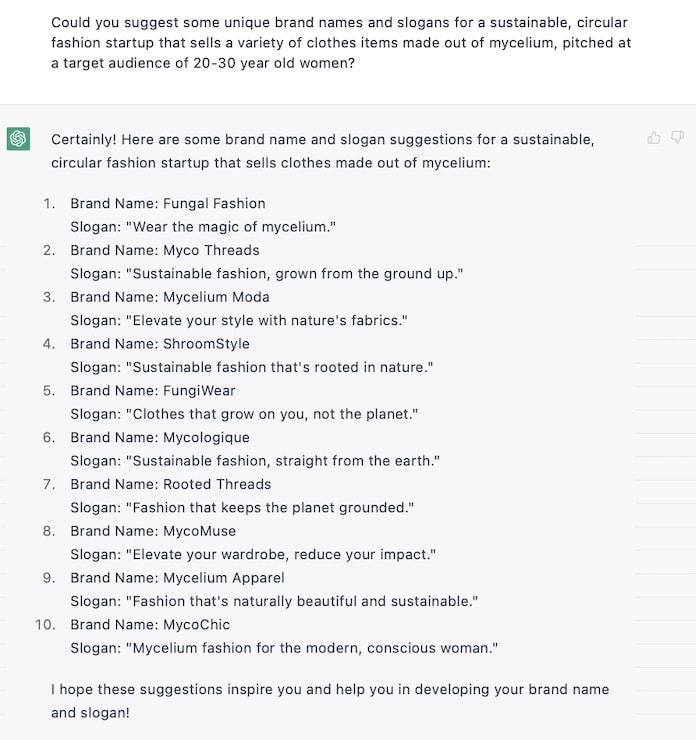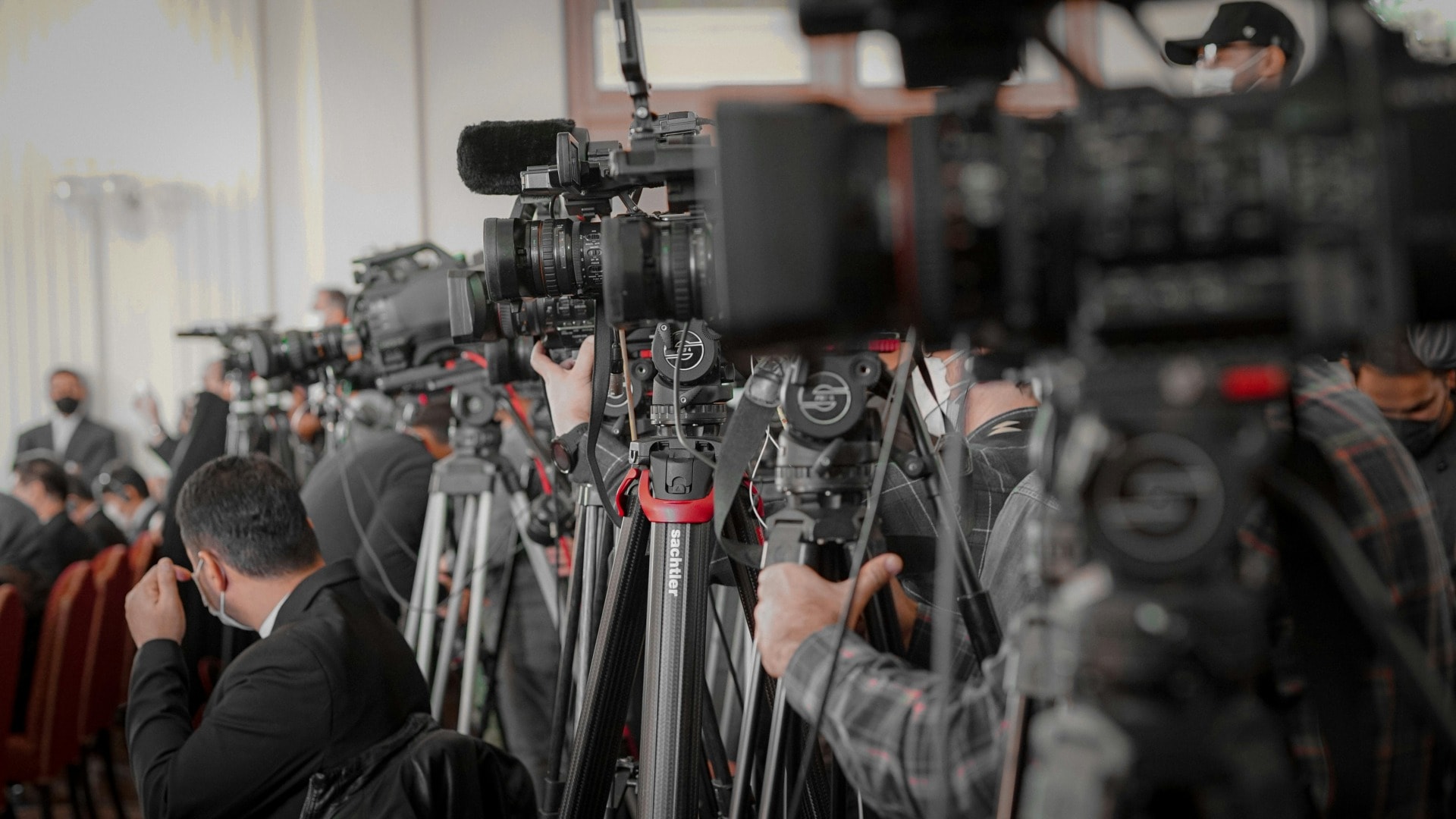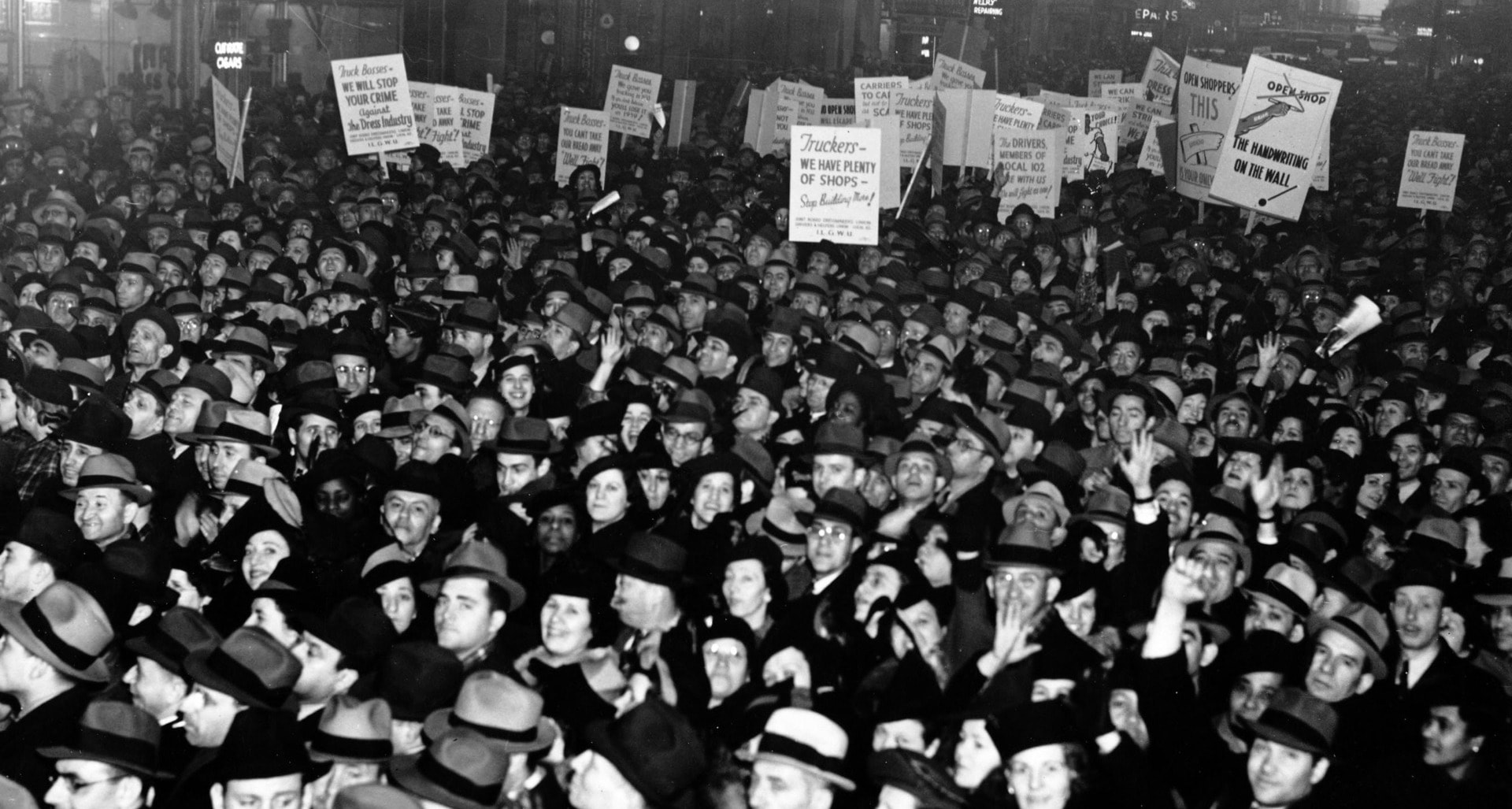In the world we live in today, everyone from your next-door neighbour to your dentist can become a self-made entrepreneur. In this oversaturated professional and social climate, distinguishing yourself from the masses is often a challenge – an exhausting one.
We also live in a world where science and art sometimes don’t mix. This issue often arises in the context of artificial intelligence (AI) vs. creativity, because people perhaps don’t think of machines as entities that possess the capacity or autonomy required to be imaginative.
But what if looking past this common misconception could actually be the key to standing out? When many claim it’s not possible, could extracting the insight and imagination that AI has to offer actually give you or your business that coveted edge?
This is the exact concept distilled by the authors Richard Bowman and David Boyle, in their new AI handbook, “PROMPT.”
Serving as a 282-page practical guide or “cookbook” for creative brand growth, “PROMPT” aims to show startup founders, entrepreneurs, CEOs and marketing teams alike how to grow their brands and stay ahead of the competition using AI.
The book focuses on one specific, recently launched – and nothing less than revolutionary – AI model in particular. You guessed it – ChatGPT.
“Whether you’re just starting out or are already familiar with AI, this book will provide you with the knowledge and skills you need to harness the power of ChatGPT and get ahead,” say the authors.
ChatGPT, in case you’re not familiar, is OpenAI’s human-like conversational chatbot that has given the rest of the tech sector a speedy run for their money since its release in November last year.
After amassing over one million followers in just five days after it dropped, ChatGPT is now officially the fastest-growing tech platform in history.
In short, ChatGPT’s sophisticated capabilities are seemingly unlimited. As a result, many are now concerned that the chatbot poses an existential threat to search engines, writers, coders and academics alike (and the list doesn’t stop there).
3 cool examples of ChatGPT usage in the past week:
1) friend’s kid using it to help write better stories
2) me using it to learn about genetics
3) a guy emailed to say he’s using it to help run his one-man small business—help with marketing, data entry, customer support, etc
— Sam Altman (@sama) February 12, 2023
But rather than a competitor, perhaps a better way to view ChatGPT is as a catalyst or companion. Whilst many – due to fear of replacement – position themselves to compete with AI, isn’t it better to collaborate, and end up ahead of the crowd in the process?
That’s the angle that authors Bowman and Boyle have taken with “PROMPT,” seeking to provide readers with helpful guidance on how to craft questions and get the best for their businesses and brands out of ChatGPT.
Between them, the authors have over 35 years of experience in working with the world’s biggest brands. Through their agencies Audience Strategies, which is run by Boyle, and This Is Insight, run by Bowman, they help businesses to better understand their audiences, conduct consumer and market research, and drive growth with the help of technology.
Throughout the book, the authors share examples of tried-and tested-methods and practical prompts that are designed to extract unique and creative answers from the chatbot, all with the aim of helping readers fuel their own brand development, audience engagement, decision-making and innovation.
“Are you looking to use the latest technology to advance your career?” ask the authors.
If your answer is yes, then read on, because Impakter had the pleasure of speaking with Richard Bowman and David Boyle about harnessing the power of ChatGPT for creativity, as well as about the chatbot’s capabilities evolving when OpenAI releases the hotly-anticipated GPT4 upgrade in the near future.
When this happens, some have said ChatGPT is expected to become as complex, if not more so, than the human brain, so let’s see what tips and tricks the authors have to share about how we can put this era-defining compute power to best use!
— 📕 PROMPT: work better, quicker and happier (@PROMPT_AIGrowth) February 1, 2023
Let’s start off with a personal question: Could you share some examples of how you both use ChatGPT in your daily lives?
Bowman and Boyle: We now use ChatGPT all day, every day.
Over time, we’ve learned to use it to help us with more and more tasks, to the extent that we now feel that all of our work is better, quicker, clearer, and best of all – it’s also a lot more fun! (Yeah, we realize that is a big claim.)
Some examples of how we’ve used ChatGPT in the last 24 hours:
1. Summarizing open-ended feedback from a post-conference survey
Before ChatGPT, we would have done this manually, but using the chatbot has made the task much easier.
Rather than having to spend time distilling the main message of the responses, we can now save our brainpower for the most important part: interpreting the feedback and suggesting actions for the client to take.
2. Writing a project proposal
One thing to remember, is that ChatGPT can’t come close to replacing humans here.
But what it does do well, is help us to focus on the important decisions associated with the project and what elements might be needed, whilst it goes about explaining and filling in all the minor details.
Ultimately, using ChatGPT to assist in writing a project proposal helps us to do a better job by focusing on what’s important, and not getting distracted by what’s not.
3. Suggesting audience segments to a potential client, within the first meeting
This would usually come much later, after the contract was signed. But with ChatGPT’s help in brainstorming and suggesting possible audience demographics, behaviours and professions etc, we can bring better and sharper thinking, earlier into the process.
Of course, we still need to do the hard work of shaping, validating, and quantifying these hypotheses during the project itself, but the process is significantly more efficient and effective with the help of ChatGPT.
4. Exploring consumer frustrations and reasons for not using a product or service
While many marketing professionals focus on celebrating the positives of a product or service, as well as the perfect or ideal scenarios in which they operate, an equally important insight for building better processes, is understanding what the barriers are so that we can overcome them.
For example, we recently used ChatGPT when brainstorming with a client about why users might not be willing to pay for an app they were developing, rather than focusing solely on why they would.
i think AI is going to be the greatest force for economic empowerment and a lot of people getting rich we have ever seen
— Sam Altman (@sama) February 13, 2023
Were there any times when ChatGPT surprised you with its answers?
Bowman and Boyle: What surprised us?
Boyle: Well, I asked ChatGPT to help me explain a strong feeling that I had, but wasn’t able to articulate: AI amplifies all of our abilities, so it’s important that we’re careful to use it only to amplify our strengths, not our weaknesses.
What was surprising, was that yes, ChatGPT helped to explain my feelings, but it also argued back!
It made the point that AI can actually help you to overcome your weaknesses, by teaching and guiding you to develop those areas. I hadn’t considered that angle before!
AI multiplies your abilities. The more you have, the bigger the benefit https://t.co/IZTji3n0Ob
— David Boyle (@beglen) February 12, 2023
Bowman: Something that I’ve found surprising, is that even when ChatGPT is dealing with unique or novel content, it still has the power to infer smart answers about it.
For example, we were exploring new flavours of protein bars, based on the consumer insight that poor flavours and dry texture were a common frustration with many bars currently on today’s market.
Not only did ChatGPT help us to develop new flavours, but it could even effectively communicate why they were interesting and how we might position them to our target audience.
It even helped write social media posts to help sell them!

You describe your new book, “PROMPT,” as a “cookbook” for the marketing world. Could you explain what you mean by this, and the ways in which ChatGPT could be used to help grow a brand?
Bowman and Boyle: It’s great to see so many prompt ideas flying around the web, but we recognise that marketing professionals are very busy. So, we decided to pull together all of the best ones in a way that’s easy to engage with, especially in the midst of a chaotic day.
Ergo, we refer to PROMPT as a “cookbook” for the marketing industry, because it provides a step-by-step guide on how to effectively use ChatGPT for professional purposes, and much like a cookbook, you can choose to jump around different chapters to access the information that you need at any given time, rather than having to read it cover to cover.
This, therefore, serves as a powerful tool to generate innovative ideas for marketing campaigns, streamline market research, and analyze vast amounts of data – all with the ultimate goal of enhancing brands, products, and customer experiences.
In addition to creative purposes, we also want to emphasize the significance of using ChatGPT for strategic thinking and practical tactics. For example, although content creation is a critical component – particularly in social media and website copy – it’s equally as crucial to take the time to think strategically.
ChatGPT can assist here too. For example, in assessing the audience needs – whether met or unmet – that exist within any given market, the various segments that articulate those needs, as well as which target audience a business should concentrate on.
These are all business-critical strategic marketing tasks that ChatGPT is adept at aiding with, when used correctly of course, and PROMPT guides the reader through these steps easily.
Could you share some examples of how ChatGPT could be used to create, for example, a viral marketing campaign, a brand name or a slogan?
Bowman and Boyle: We’ve found that ChatGPT offers a range of possibilities for crafting compelling marketing campaigns.
One way is by using it to identify and understand target audiences and then create brand names and/or slogans that resonate with those individuals specifically, ensuring that the content, proposition, and language used all align with their preferences. ChatGPT can even adapt its writing style to match the brand tone and audience.
For instance, we recently used ChatGPT to drive the positioning and marketing of a DJ’s upcoming tour.
First, we used the chatbot to help identify five different audience segments for the DJ to focus on.
Then, ChatGPT helped us to analyze social media conversations, identifying new trends and topics that could inform our targeting and marketing strategies.
Finally, we even used the chatbot to help design the targeted marketing content for each of the different audiences, based on their individual preferences.
However, while ChatGPT is efficient and scalable when used in this way, it’s important to remember that human creative skills are still vital in this process, and we still highly recommend having an experienced human oversee these tasks and curate the chatbot’s output.
With our 20 years of experience, we know how to guide ChatGPT, evaluate and iterate its work, as well as edit, enhance, and rework its outputs appropriately.
One of the most significant benefits of using ChatGPT in market research is its ability to streamline existing processes.
Here’s how @beglen and @rich_a_bowman leverage ChatGPT as a “research assistant”. 🧵
— Audiense (@AudienseCo) February 14, 2023
Given that ChatGPT has been trained on data that already exists on the internet, do you think we risk losing some degree of originality by using it for creative purposes? Won’t we just end up regenerating the same ideas? Or can ChatGPT be used to expand the scope of human imagination and creativity?
Bowman and Boyle: Although it’s true that ChatGPT is trained on existing data, we’ve certainly found that it has the capability to expand the scope of human creativity and enable us to push the boundaries of what’s possible.
By thinking about problems from the right angle, providing the right prompts, and experimenting with different approaches, we can use ChatGPT to generate novel insights and ideas that we certainly would not have considered otherwise!
In this way, ChatGPT regularly helps us explore new territory and come up with original concepts.
That being said, relying solely on ChatGPT to create original ideas would be unwise. While ChatGPT can provide a strong foundation for our work, humans must use their own innate creativity to point ChatGPT in the right direction, refining and developing the ideas it produces. By doing so, we can ensure that our work is truly original and stands out from the crowd.
Related Articles: ‘Journalists Beware: ChatGPT Is Coming for Your Job,’ Warns Chatbot | ChatGPT Poised for Upgrade: It Could Become as Complex as the Human Brain | Google vs. ChatGPT: Who Really Knows Best? | ‘I am a Machine, With no Soul or Heart’: An Interview With Artificial Intelligence | Microsoft vs. Google: The Tortoise and the Hare of the Tech World?
Through our own experience using ChatGPT, we have found that rather than stemming the flow, it actually fosters further creativity in more ways than one.
Firstly, by generating the initial draft of any document, ChatGPT frees up our time and energy that can be spent focusing on challenging, refining, editing and expanding upon ideas, rather than having to come up with them from a blank slate.
Secondly, ChatGPT can help us to understand a much wider, and more diverse range of audience needs and preferences within any given market, enabling us to create more imaginative and inclusive campaigns.
Lastly, incorporating ChatGPT helps us to clearly define our target audience, conduct research more efficiently, and communicate our ideas more precisely to our peers, resulting in our work being much more impactful.
Unlocking the power of ChatGPT:
If you're interested in exploring the full creative potential of ChatGPT, here's a list of 130+ creative prompts that showcase the power of AI chatbots.
Examples, links, and files below ↓ pic.twitter.com/RlgTQ0TFjJ
— AI Breakfast (@AiBreakfast) January 3, 2023
What are the three most profound changes you expect to see ushered in as ChatGPT continues to evolve and upgrade?
Bowman and Boyle: We see ChatGPT as an electric bike for the mind: it provides the power to tackle bigger challenges and achieve greater results, but we still need to peddle and steer to really get anywhere [and avoid crashing]!
As the technology continues to evolve, we expect to see more people leveraging its capabilities to tackle bigger and more complex problems with ease.
With the release of GPT-4, we anticipate even more significant improvements in AI capabilities such as faster speeds, increased accuracy, and better handling of larger data volumes. This will enable AI to become an even more accessible and integral part of our daily lives, providing greater democratization of sophisticated technologies.
When this happens, we’ll need to peddle and steer less, and we’ll be able to tackle a wider variety of terrains.
Moreover, we believe that integration with other tools, apps, and workflows outside of the confinement of the ChatGPT interface will help further expand the applications of AI. And as more professionals learn to harness the power of AI in their work, this will lead to new and innovative ways of thinking about marketing and creativity.
This is a VERY valuable lesson for everyone wrestling with the role of AI.
I’d say
🚲 BIKE = technology (we all use that)
⚡️ 🚲 ELECTRIC BIKE = AI (a massive upgrade) https://t.co/Yvla9okExj— David Boyle (@beglen) February 10, 2023
Finally, we couldn’t round this up without a question from ChatGPT itself! We inputed the following prompt: “Imagine you are the CEO of a new startup, what questions would you want to ask the authors of the book, ‘PROMPT,’ Richard Bowman and David Boyle?”
Here’s what ChatGPT asked: How can ChatGPT assist a startup to have a positive impact on society?
Bowman and Boyle: Assuming that the CEO starts out with an idea that actually intends to have a positive impact on society, then ChatGPT can assist their startup to deliver this in the same way it can help any company – by helping them to better understand their audience, and create products and services that truly meet this audience’s needs.
By using ChatGPT to analyze customer feedback, social media conversations, and other forms of data, startups can gain valuable insights into what their customers want and need. This, in turn, can help them create products and services that are more innovative, more effective, and more socially responsible.
That’s the core mission of PROMPT: It’s ultimately about how brands, CEOs, founders and marketing professionals alike can use ChatGPT as a tool to better understand and meet audience needs.
However, even if you aren’t starting out with a startup that’s focused on having a positive impact, ChatGPT can still help.
By simply sharing your ideas with ChatGPT and asking it to refine them, the chatbot is able to come up with similar ideas that have a more positive impact on society – you’ll have better and clearer ideas much quicker!
You’d be surprised at how good of a thought and ideation partner ChatGPT is, with the right PROMPTs of course.
If you’re interested in harnessing the unique power of ChatGPT to grow your business, make your brand stand out, advance your career, or simply just get ahead of the competition, then you can explore Richard Bowman and David Boyle’s cookbook of chatbot cheatsheets by purchasing their handbook-come-cookbook, “PROMPT,” here.
Alternatively, the authors themselves told Impakter that:
“If you’re working to make the world a better place, and don’t feel you can pay for PROMPT now, then send a message to @PROMPT_AIGrowth on Twitter and we’ll send you a copy. We can’t wait to see what you all do with it!”
TIME just revealed the cover of their next issue pic.twitter.com/mZSAbww5gl
— AI Breakfast (@AiBreakfast) February 16, 2023
— —
Correction: This article has been amended since publication to remove some company names from the introduction due to updated information.
Editor’s Note: The opinions expressed here by the authors are their own, not those of Impakter.com — In the Featured Photo: Large book. Featured Photo Credit: Jazmin Quaynor/Unsplash














